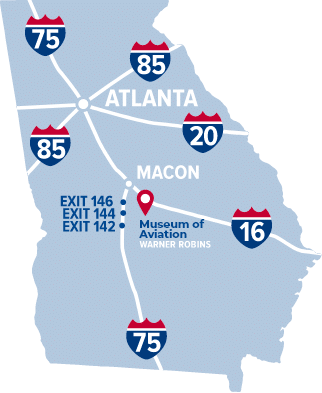First flown in May 1958, the Phantom II originally was developed for U.S. Navy fleet defense and entered service in 1961. The USAF evaluated it for close air support, interdiction and counter-air operations, and in 1962 approved a USAF version. The USAF’s Phantom II, designated the F-4C, made its first flight on 27 May 1963. Production deliveries began in November 1963. The F-4D is very similar to the F-4C, but with improved avionics and other systems. In its air-to-ground role, the F-4 could carry twice the normal bomb load of a WWII B-17. USAF F-4s also flew reconnaissance and “Wild Weasel” anti-aircraft missile suppression missions. Phantom II production ended in 1979 after more than 5,000 had been built—more than 2,600 for the USAF.
The F-4D on display was delivered to the USAF and the 33rd Tactical Fighter Wing (TFW) Eglin AFB, Florida in April 1967. In July 1967 it was delivered to the 8th TFW Ubon Royal Thai Air Force Base (RTAFB), Thailand. This rugged F-4 was assigned to the 555th “Triple Nickel” Tactical Fighter Squadron (TFS) from July 1967 to August 1972, and is credited with one confirmed kill on 14 February 1968, and another claimed by a crew but not confirmed by a combat evaluation board due to unknown reasons. According to officials at the National Museum of the Air Force, which keeps such records, the aircraft has historically correct markings (i.e., two red aerial victory stars on its engine intake fins) and the second kill could have been unconfirmed due to reasons such as insufficient gun camera footage or rules of engagement. The confirmed kill was a North Vietnam MiG-17 shot down by Major Rex D. Howerton and First Lieutenant Ted L. Voight using their 20mm cannon. The aircraft was later assigned to the 432nd Tactical Reconnaissance Wing at Udorn RTAFB before being assigned to the 3rd TFW at Kunsan Air Base, Korea in August 1972. It was then assigned to various USAF units in the United States before being retired from the 89th Tactical Fighter Squadron at Wright-Patterson AFB, Ohio. It was moved to the Museum of Aviation in 2008.
Warner Robins Air Logistics Center managed the communications, fire control, air-to-air missiles, gun and electronic warfare systems for all the USAF F-4s.












